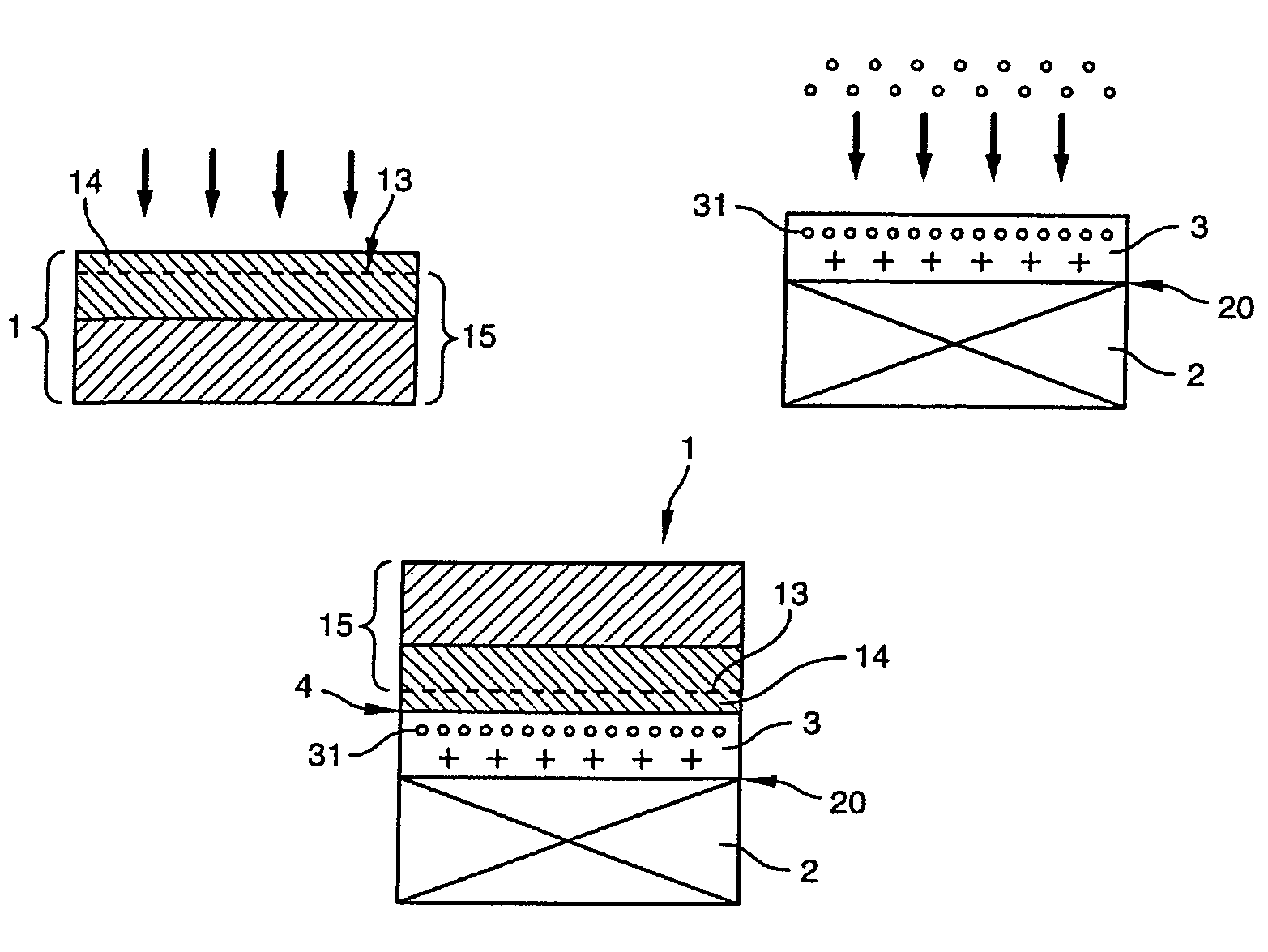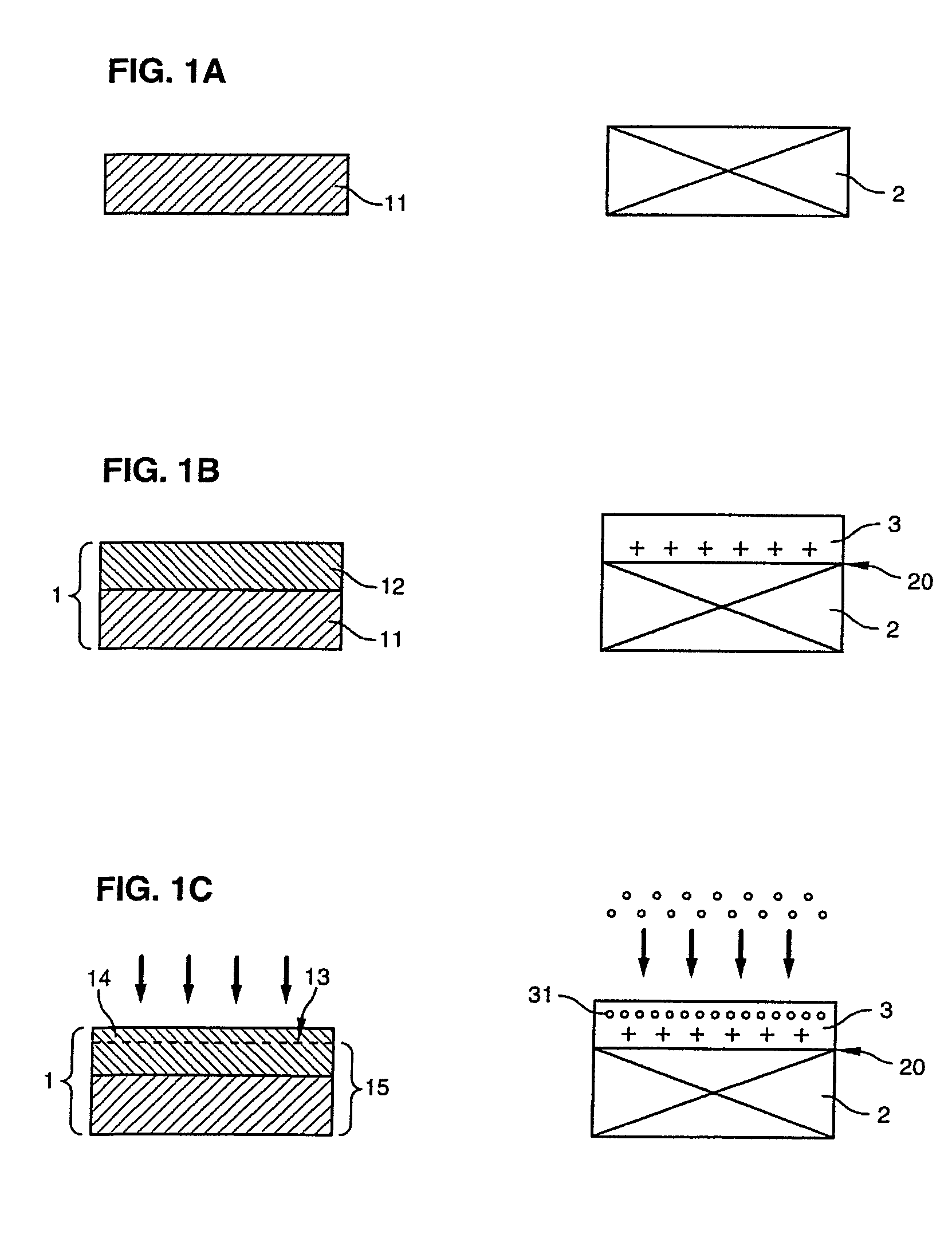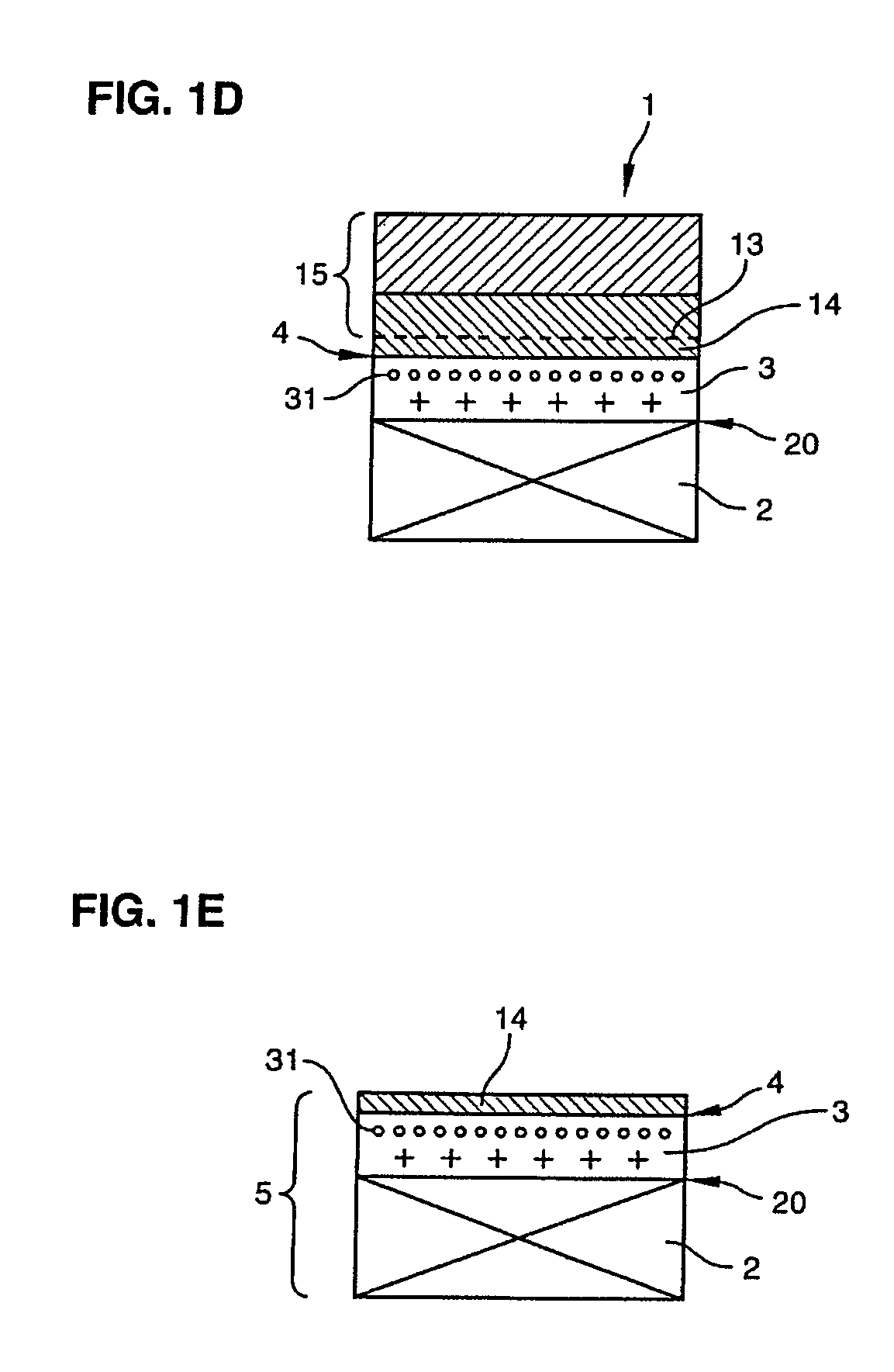Semiconductor-on-insulator type heterostructure and method of fabrication
a technology of semiconductors and heterostructures, applied in the field of semiconductoroninsulator-type heterostructure fabrication, to achieve the effect of limiting or eliminating defects
- Summary
- Abstract
- Description
- Claims
- Application Information
AI Technical Summary
Benefits of technology
Problems solved by technology
Method used
Image
Examples
example 1
[0082]A donor substrate was prepared by growing a layer of germanium on silicon by epitaxy. Hydrogen and / or helium was then implanted in the germanium to create a zone of weakness. A silicon receiver substrate was also prepared by depositing therein an insulating layer of silicon oxide (SiO2) 250 nm to 300 nm thick.
[0083]Silicon was then implanted in the SiO2 layer to create therein a two-dimensional trapping layer. The implantation was carried out at an energy of 0.5 to 5 keV, at a dose of 5×1015 to 5×1016 Si+ ions / cm2. This resulted in formation of a layer of nanoparticles located between 1.5 nm and 4 nm (nanometers) beneath the surface of the SiO2 layer with a thickness in the range 2 nm to 3 nm.
[0084]Bonding and detachment were carried out as described above with reference to FIGS. 1 and 2.
example 2
[0085]FIG. 4 is a drawing produced from a photograph obtained by transmission electron microscopy (TEM), and shows a trapping layer formed in a layer of SiO2 by implanting silicon at an energy of 1 keV and a dose of 1×1016 Si+ / cm2. The trapping layer 31 appears as a black line in the middle of the oxide 3.
[0086]In addition, tests were carried out to determine the range of energy and implantation dose to be used in producing the trapping layer when the insulator was made with silicon dioxide (SiO2) or silicon nitride (Si3N4).
[0087]When the insulator was silicon dioxide (SiO2), the implanted species preferably include silicon, germanium, or oxygen. In this case, either only one of the categories of atomic species mentioned below or several of them in succession may be implanted:
[0088]Silicon atoms with an implantation energy in the range 0.5 keV to 5 keV and an implantation dose in the range of 5×1015 to 5×1016 Si+ / cm2. Under these conditions, the layer of nanoparticles is located 15 ...
PUM
 Login to View More
Login to View More Abstract
Description
Claims
Application Information
 Login to View More
Login to View More - R&D
- Intellectual Property
- Life Sciences
- Materials
- Tech Scout
- Unparalleled Data Quality
- Higher Quality Content
- 60% Fewer Hallucinations
Browse by: Latest US Patents, China's latest patents, Technical Efficacy Thesaurus, Application Domain, Technology Topic, Popular Technical Reports.
© 2025 PatSnap. All rights reserved.Legal|Privacy policy|Modern Slavery Act Transparency Statement|Sitemap|About US| Contact US: help@patsnap.com



